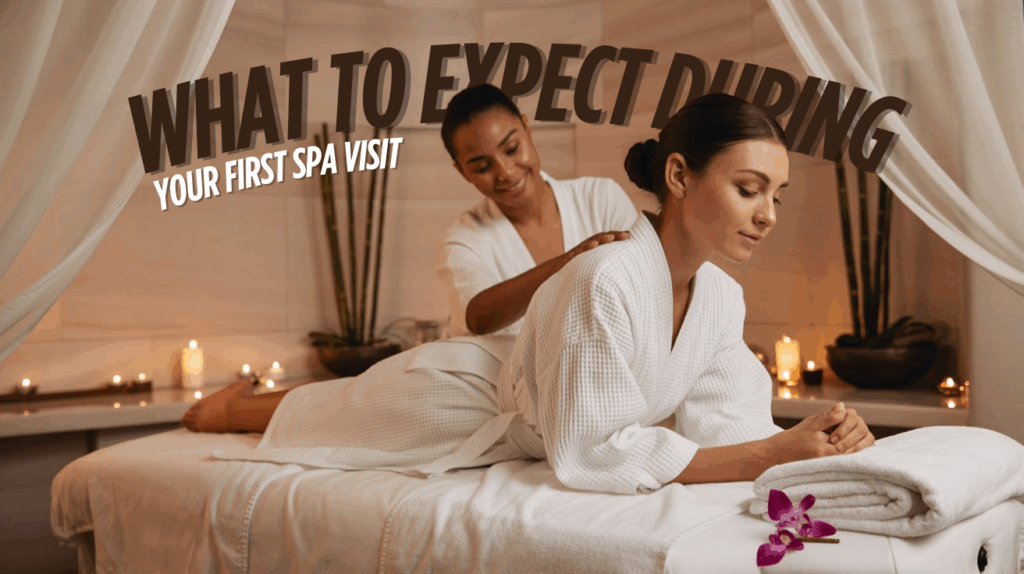What to Expect During Your First Spa Visit: A Beginner’s Guide

Visiting a spa for the first time can feel both exciting and overwhelming. Whether you’re planning a day of pampering or looking for therapeutic relief, being prepared will help ensure a smooth and relaxing experience. This comprehensive beginner’s guide will walk you through every step of your first spa visit, from booking your appointment to post-treatment care, so you can walk away feeling truly rejuvenated.
1. Booking Your Appointment
Start by researching reputable spas in your area. Look for online reviews, service menus, photos, and testimonials. Choose a spa that offers the treatments you’re interested in, such as massages, facials, or body wraps. Many spas allow booking via their websites, apps, or by phone.
When you book, inform the spa of any allergies, medical conditions, or special requests. This helps the staff prepare and tailor your treatment accordingly. Don’t hesitate to ask questions—understanding what a treatment involves can help you feel more comfortable and confident.
Pro Tip: Consider booking during off-peak hours for a quieter and more personalized experience.
2. Arriving at the Spa
Plan to arrive at least 20–30 minutes early. This gives you ample time to check in, fill out health forms, change into your robe and slippers, and begin the relaxation process. Most spas provide a locker to store your personal belongings securely.
Once changed, you’ll typically wait in a relaxation lounge, where you’re encouraged to unwind with herbal tea, fruit-infused water, or calming music.
Important: Avoid caffeine or alcohol before your appointment, as it can dehydrate your body and lessen the effects of your treatment.
3. Understanding the Spa Menu
Spa menus can sometimes be overwhelming, especially if you’re new. Services generally fall into the following categories:
- Massage Therapy: Swedish, deep tissue, hot stone, sports, prenatal
- Facials: Anti-aging, acne treatment, hydration, LED therapy
- Body Treatments: Wraps, scrubs, mud therapy, detoxification
- Hydrotherapy & Relaxation: Saunas, steam rooms, float tanks, Vichy showers
Don’t hesitate to ask a spa concierge for guidance based on your needs—whether that’s stress relief, skin rejuvenation, or muscular recovery.
4. During Your Treatment
Your licensed therapist or esthetician will greet you and lead you to a private treatment room. They’ll ask questions to confirm your comfort level, pressure preferences, or skincare goals.
Throughout the treatment, feel free to speak up. Whether it’s the massage pressure, table warmth, background music, or needing a break, your comfort is the top priority.
Expect calming ambiance—dim lights, soothing music, and aromatherapy—to enhance relaxation.
Spa Etiquette Tip: Leave your phone on silent and minimize talking to respect the tranquil setting.
5. Aftercare & Relaxation
Once your treatment ends, don’t rush. Take your time to slowly get up, drink plenty of water, and enjoy post-treatment amenities like a sauna, steam room, or quiet lounge. Hydration is crucial, especially after massages or body treatments.
Some spas offer post-care products that complement your treatment. Don’t hesitate to ask your therapist for recommendations if you’re interested in maintaining your results at home.
Avoid intense physical activity or alcohol immediately after your session. Your body needs time to absorb the full benefits.
6. Spa Etiquette Essentials
- Punctuality: Arrive early to relax and avoid shortening your treatment time.
- Gratuity: Tips are generally expected—15% to 20% is standard unless included.
- Hygiene: Shower before treatments, especially after using pools or saunas.
- Dress Code: Undress to your comfort level. Most spas provide robes, towels, and disposable undergarments.
7. Making Spa Visits Part of Your Wellness Routine
Regular spa visits aren’t just a luxury—they’re a form of self-care that benefits your physical and mental health. Monthly treatments can:
- Reduce stress and anxiety
- Improve blood circulation and immune function
- Enhance skin health and appearance
- Relieve chronic pain or muscle tension
Consider purchasing spa packages or memberships for better pricing and consistency. Many spas offer loyalty programs or seasonal promotions.
Final Thoughts
Your first spa visit should leave you feeling refreshed, relaxed, and eager for your next session. With the right preparation and mindset, a spa experience can become a cherished part of your wellness journey. Embrace the process, communicate openly with your providers, and allow yourself to fully enjoy the healing benefits of spa therapy.
Frequently Asked Questions
1. What should I wear to a spa?
Most spas provide robes, towels, and slippers for your comfort. Wear comfortable, loose-fitting clothes to and from your appointment. Avoid wearing jewelry or heavy makeup.
2. Do I have to be completely undressed for a massage?
Not necessarily. You can undress to your comfort level. Professional therapists are trained to ensure your modesty with proper draping techniques during the entire treatment.
3. How early should I arrive for my spa appointment?
It’s best to arrive at least 15–20 minutes early. This gives you time to fill out any forms, get settled, and begin to relax before your treatment.
4. Can I request a specific therapist?
Yes, most spas allow you to choose a male or female therapist or request someone you’ve had before. Just mention your preference when booking.
5. Is it okay to talk during the treatment?
You can talk if you’d like, but many prefer to enjoy the silence. Always feel free to speak up if you need adjustments in pressure, temperature, or anything else.
6. Should I tip my therapist?
Tipping is customary. A 15–20% gratuity is standard unless it’s already included in the service charge.
7. Can I go to the spa if I’m pregnant?
Yes, many spas offer prenatal treatments. Be sure to inform the spa when booking, and always consult your doctor beforehand.
8. How often should I go to a spa?
It depends on your needs and budget. Monthly visits are ideal for maintaining wellness, stress relief, and skincare.
9. What if I have allergies or health conditions?
Always let the spa know in advance about any allergies, skin sensitivities, or medical conditions so they can adjust treatments accordingly.
10. What amenities can I use before or after my treatment?
Many spas offer access to saunas, steam rooms, relaxation lounges, or pools. Ask ahead about what’s included with your service.
